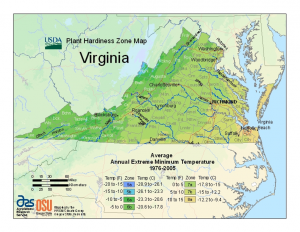Topic: Fertilizing C3 and C4 Turfgrasses for Optimum Efficiency and Environmental Protection
First, Transition Zone

Difference between 7 and 8 is dramatic.
Zone 7 and under – COOL PLANTS
– summer is difficult is for them
– heat and humidity “open” them up for pests
Zone 8 and above – WARM
Zone 8 and above – WARM PLANTS
-Winter is difficult for them
-If they survive winter, they might be weak and prone to attack by pests
Fertilizer should not be considered a cure for plants that suffer because they are not adapted to the climate.
Especially true for shrubs and trees.
“Cool” Trees that do not survive very long in Zone 8 include hemlock and white pine.
Indian Hawthorne is a “warm” shrub that will not survive very long in zone 6 (or 7)
Flowering dogwood
Do not plant in full sun in zone 8 but such light levels are ok in zone 7
much information from 2021 (?) Short Course

Cool season grasses are C3 grasses, while warm season grasses are C4 grasses.
The C refers to carbon and the number is the number of carbon atoms in the first compound produced by photosynthesis.
So, cool season grasses produce a compound with 3 carbon atoms and warm season grasses a 4 carbon compound.
The 2 groups have different growth requirements, responding differently to temperature, moisture and light.
Warm season grasses require higher temperatures and light with lower requirements for moisture.
For cool season grasses, it’s the opposite.
C3 plants are inefficient in terms of their photosynthetic mechanism.
Cool Season Turfgrasses
C4 plants are much more efficient at capturing carbon dioxide.
Warm Season Turfgrasses
C3 Plants
About 95% of the plants on earth are C3 plants. As the name indicates they carry out C3 photosynthetic mechanism. C3 photosynthesis is thought to have arisen nearly 3.5 billion years ago. These plants are mostly woody and round leaf plants. In these plants, carbon fixation is carried out in the mesophyll cells that are just beneath the epidermis. Carbon dioxide from the atmosphere that enters through the stomata is accepted by Ribulose bisphosphate and is fixed in to phosphoglycerate by Ribulose bisphosphate carboxylase enzyme (Rubisco). This process is known as carboxylation. Phosphoglycerate molecules enter the Calvin cycle in the mesophyll cells. C3 plants are known to be inefficient in terms of their photosynthetic mechanism. This is because of the occurrence of photorespiration in C3 plants. This effect is caused by the oxygenase activity of Rubisco. Oxygenation of Rubisco works in the opposite direction to carboxylation, effectively undoes photosynthesis by wasting large amounts of carbon originally fixed by the Calvin cycle at great expense, and results in loss of carbon dioxide from the cells that are fixing carbon dioxide. Interaction with oxygen and carbon dioxide occurs at the same site on Rubisco. These competing reactions normally run at a ratio of 3:1 (carbox: oxyg). Thus, it is clear that photorespiration is a light stimulated process that consumes oxygen and evolves carbon dioxide.
C4 Plants
C4 plants are commonly seen in dry and high temperature areas. Approximately 1% of plant species have C4 biochemistry. Some examples for C4 plants are corn and sugarcane. As the name indicates these plants carry out C4 photosynthetic mechanism. C4 photosynthesis is thought to have arisen nearly 12 million years ago, long after the evolution of C3 mechanism. C4 plants may be better adapted now, as carbon dioxide levels are much lower now than 100 million years ago. C4 plants are much more efficient at capturing carbon dioxide. C4 photosynthesis is found in both monocot and dicot species. In contrast to C3 plants, the first stable product formed during photosynthesis is oxaloacetic, which is a C4 compound. The leaves of these plants show a special type of anatomy called “Kranz Anatomy”. There is a circle of bundle sheath cells with chloroplasts around vascular bundles by which C4 plants can be identified. In this pathway, carbon dioxide is fixed twice. In the mesophyll cell cytoplasm, CO2 is fixed with phospho enol pyruvate (PEP), which acts as a primary acceptor. The reaction is catalyzed by PEP carboxylase enzyme. Then PEP is converted to malate and then to pyruvate liberating CO2. This CO2 is then fixed with Ribulose bisphosphate, to form 2 phosphoglycerate to carry out Calvin cycle.

What happens if heavy amounts of fertilizers are applied in spring?
– immediate results for top/for roots
– results in the summer

Why should most of your fertilizer be applied before fall?

